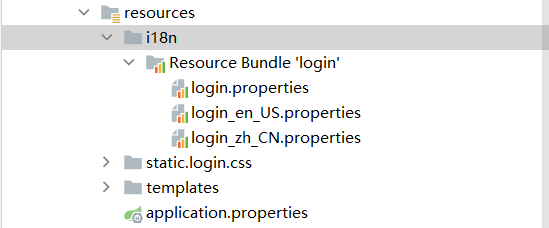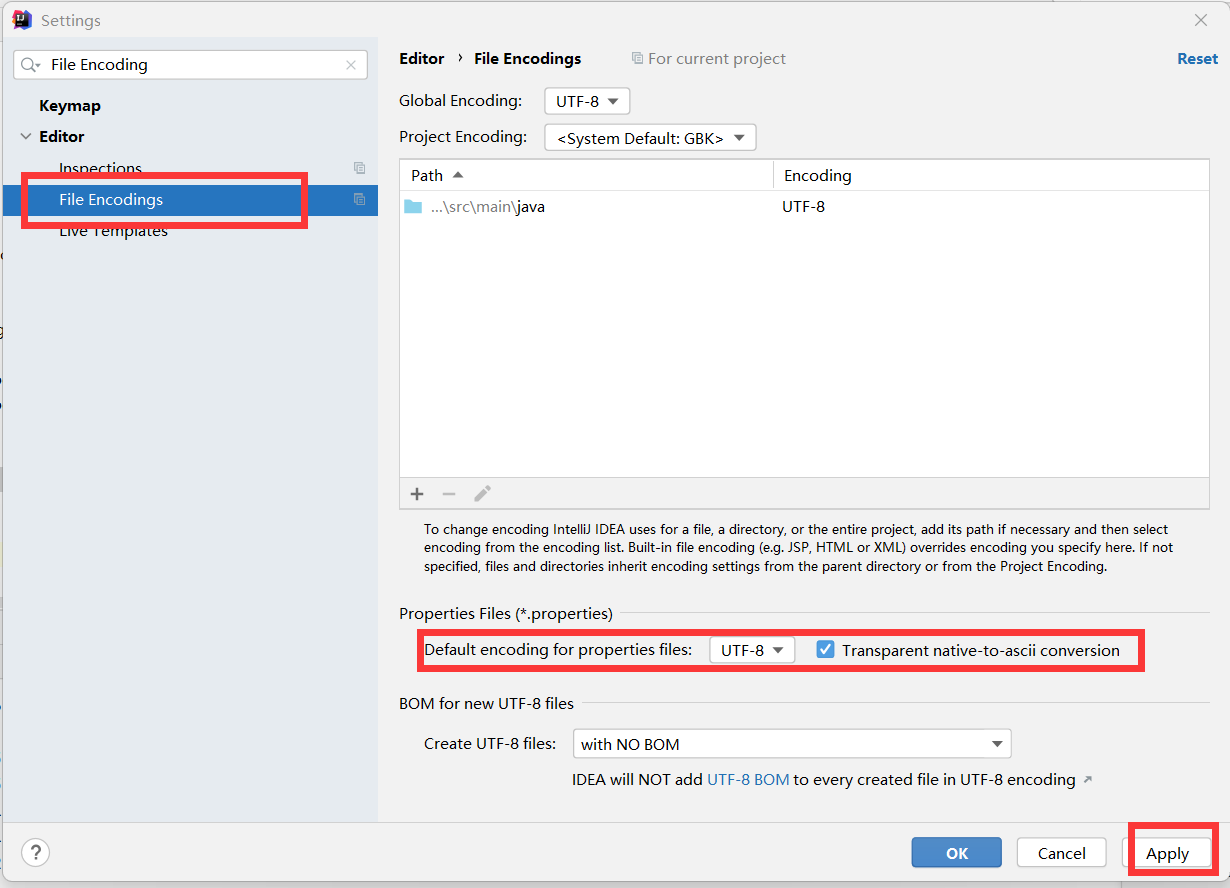前言
在一个Web应用中,通常会采用MVC设计模式实现对应的模型、视图和控制器,其中,视图是用户看到并与之交互的界面。对最初的Web应用来说,视图是由HTML元素组成的静态界面;而后期的Web应用更倾向于使用动态模板技术,从而实现前后端分离和页面的动态数据展示。Spring Boot框架为简化项目的整体开发,提供了一些视图技术支持,并主要推荐整合模板引擎技术实现前端页面的动态化内容。本文对SpringBoot常用的Thymeleaf进行整合。
Thymeleaf基本语法
Thymeleaf是一种现代的基于服务器端的Java模板引擎技术,也是一个优秀的面向Java的XML、XHTML、HTML5页面模板,它具有丰富的标签语言、函数和表达式,在使用Spring Boot框架进行页面设计时,一般会选择 Thymeleaf模板。我们在这里学习Thymeleaf 常用的标签、表达式。
常用标签
标签
Thymeleaf标签
| th:标签 | 说明 |
|---|---|
| th:insert | 页面片段包含(类似JSP中的include标签) |
| th:replace | 页面片段包含(类似JSP中的include标签) |
| th:each | 元素遍历(类似JSP中的c:forEach标签) |
| th:if | 条件判断,条件成立时显示th标签内容 |
| th:unless | 条件判断,条件不成立时显示内容 |
| th:switch | 条件判断,进行选择性匹配 |
| th:case | th:switch分支,选择的元素 |
| th:object | 用于替换对象 |
| th:with | 用于定义局部遍历 |
| th:attr | 用于属性修改 |
| th:attrprepend | 通用属性修改,将计算结果追加前缀到现有属性值 |
| th:attrappend | 通用属性修改,将计算的结果追加后缀现有属性值 |
| th:value | 属性值修改,指定标签属性值 |
| th:href | 用于设定链接地址 |
| th:src | 用于设定链接地址 |
| th:text | 用于指定标签显示文本内容 |
| th:utext | 用于指定标签显示内容,对特殊标签不转译 |
| th:fragment | 声明片段 |
| th:removve | 移除片段 |
如何使用标签
使用标签只需要加上一个命名空间就可以了。<html lang=\"en\" xmlns:th=\"http://thymeleaf.org\"> 即修改原html的第二行就可以了。
<!DOCTYPE html>
<html xmlns:th=\"http://www.thymeleaf.org\">
<head>
<title>Good Thymes Virtual Grocery</title>
<meta http-equiv=\"Content-Type\" content=\"text/html; charset=UTF-8\" />
<link rel=\"stylesheet\" type=\"text/css\" media=\"all\"
href=\"../../css/gtvg.css\" th:href=\"@{/css/gtvg.css}\" />
</head>
<body>
<p th:text=\"#{home.welcome}\">Welcome to our grocery store!</p>
</body>
</html>
标准表达式
| 表达式 | 说明 |
|---|---|
| ${..} | 变量表达式 |
| *{..} | 选择变量表达式 |
| #{..} | 消息表达式 |
| @{..} | 链接URL表达式 |
| ~{..} | 片段表达式 |
变量表达式
变量表达式${..}主要用于获取上下文中的变量值,示例代码如下。
这是标题
- 使用了Thymeleaf模板的变量表达式${..}用来动态获取p标签中的内容
- 如果当前程序没有启动或者当前上下文中不存在title变量,该片段会显示标签默认值“这是标题”;
- 如果当前上下文中存在title 变量并且程序已经启动,当前p标签中的默认文本内容将会被tite变量的值所替换,从而达到模板引擎页面数据动态替换的效果。
Thymeleaf为变量所在域提供了一些内置对象
| 内置对象 | 说明 |
|---|---|
| #ctx | 上下文对象 |
| #vars | 上下文变量 |
| #locale | 上下文区域设置 |
| #request | (仅限 Web Context)HttpServletRequest 对象 |
| #response | (仅限Web Context)HttpServletResponse 对象 |
| #session | 仅限Web Context) HttpSession对象 |
| #servletContext | (仅限 Web Context)ServletContext 对象 |
结合上述内置对象的说明,假设要在Thymeleaf模板擎页面中动态获取当前国家信息,可以使用#locale内置对象
<span th:text=\"${#locale.country}\">China</span>
选择变量表达式
选择交量表达式和变量表达式用法类似,一般用于从被选定对象而不是上下文中获取属性值,如果没有选定对象,则和变量表达式一样,示例代码如下。
<div th:object=\"$(session.user)\">
<p>Name: <span th:text=\"s(object.firstName)\">Sebastiahk</span></p>
<p>username:<span th:text=\"$(session.user,lastName)\">Pepper</span></p>
<p>Nationality:<span th:text=\"*(nationality)\">Saturn</span>.</p>
</div>
- ${#object.firstName}变量表达式使用Thymeleaf模板提供的内置对象object获取当前上下文对象中的frstName属性值;
- ¥{session.user.lastName}变量表达式获取当前user对象的lastName属性值;
- *{nationality}选择变量表达式获取当前指定对象user的nationality属性值。
消息表达式
消息表达式#{..}主要用于Thymeleaf模板页面国际化内容的动态替换和展示。使用消息表这式#{..}进行国际化设置时,还需要提供一些国际化配置文件。关于消息表达式的使用,下文写国际化时会详细说明。
链接表达式
链接表达式@{..}一般用于页面跳转或者资源的引入,在Web开发中占据着非常重要的地位,并且使用也非常频繁。
<a href=\"details.html\" th:href=\"@{http:localhost:8080/gtvg/order/details(order=$o.id})}\">view</a>
<a href=\"details.html\" th:href=\"@{/order/details(order=$o.id})}\">view</a>
- @{..}分别编写了绝对链接地址和相对链接地址。
- 在有参表达式中,需要按照@(路径(参数名称=参数值.参数名称=参数值..))的形式编写,同时该参数的值可以使用变量表达式来传递动态参数值。
片段表达式
片段表达式~{..}是一种用来将标记片段移动到模板中的方法。其中,最常见的用法是使用th:insert或th:replace 属性插入片段
<div th:insert=\"~(thymeleafDemo::title】\"></div>
- th:insert属性将title片段模板引用到该标签中。
- thymelcafDemo为模板名称,Thymeleal会自动查找“classpathy/resources/templates/”目录下的thymeleaDemo模板,title为声明的片段名称。
Thyemleaf基本使用
静态资源访问
Spring Boot默认设置了静态资源的访问路径,默认将/**所有访问映射到以下目录。
- classpath:/META-INF/resources/:项目类路径下的META-INF文件夹下的resources文件夹下的所有文件。
- classpath:/resources/:项目类路径下的resources文件夹下的所有文件。
- classpath:/static/:项目类路径下的static文件夹下的所有文件。
- classpath:/public/:项目类路径下的public文件夹下的所有文件。
- Spring Initializr 方式创建的 Spring Boot 项目会默认生成一个 resources目录,在resources目录中新建public、resources、static3个子目录,Spring Boot默认会依次从public、resources、static里面查找静态资源。
Thymeleaf页面展示
我们创建一个springboot项目用于本次实验。项目名为springboot_01_thyme。java8,springboot2.6.6
导入Thymeleaf依赖
<dependency>
<groupId>org.springframework.boot</groupId>
<artifactId>spring-boot-starter-thymeleaf</artifactId>
</dependency>
编写配置文件
# thymeleaf cache
spring.thymeleaf.cache=false
spring.thymeleaf.encoding=utf-8
spring.thymeleaf.mode=HTML5
spring.thymeleaf.prefix=classpath:/templates/
spring.thymeleaf.suffix=.html
创建WEB控制类
创建一个LoginController类用于数据替换效果测试。
package com.hjk.controller;
import org.springframework.stereotype.Controller;
import org.springframework.ui.Model;
import org.springframework.web.bind.annotation.GetMapping;
import java.util.Calendar;
@Controller
public class LoginController {
@GetMapping(\"toLoginPage\")
public String toLoginPage(Model model){
model.addAttribute(\"currentYear\", Calendar.getInstance().get(Calendar.YEAR));
return \"login\";
}
}
创建模板页面并引入静态资源
我们写一个login.html进行测试。我们导入一个bootstrap的样式到static/login里面,并且自己定义一些css。
<!DOCTYPE html>
<html lang=\"en\" xmlns:th=\"http://www.thymeleaf.org\">
<head>
<meta http-equiv=\"Content-Type\" content=\"text/html; charset=UTF-8\">
<meta name=\"viewport\" content=\"width=device-width, initial-scale=1,shrink-to-fit=no\">
<title>用户登录界面</title>
<link th:href=\"@{/login/css/bootstrap.min.css}\" rel=\"stylesheet\">
<style type=\"text/css\">
html,
body {
height: 100%;
}
body {
align-items: center;
padding-top: 40px;
padding-bottom: 40px;
background-color: greenyellow;
}
.form-signin {
width: 100%;
max-width: 330px;
padding: 15px;
margin: 0 auto;
}
</style>
</head>
<body class=\"text-center\">
<!-- 用户登录form表单 -->
<form class=\"form-signin\">
<h1 class=\"h3 mb-3 font-weight-normal\">请登录</h1>
<input type=\"text\" placeholder=\"用户名\">
<input type=\"password\" placeholder=\"密码\">
<div>
<label>
<input type=\"checkbox\" value=\"remember-me\"> 记住我
</label>
</div>
<button class=\"btn btn-lg btn-primary btn-block\" type=\"submit\">登录</button>
<p class=\"mt-5 mb-3 text-muted\">© <span th:text=\"${currentYear}\">2018</span>-<span th:text=\"${currentYear}+1\">2019</span></p>
</form>
</body>
</html>
- 我们使用
xmlns:th=\"http://thymeleaf.org\"引入Thymeleaf标签 - 通过th:href引入外联css
- 通过th:text后台动态传递年份currentYear
最后我们通过访问http://localhost:8080/toLoginPage 可以查看效果
配置国际化页面
编写多语言配置文件
在resources目录下创建名为i18n的文件夹,数一数这个单词多少个字母internationalization,就知道为什么叫i18n了。
然后我们在i18n文件夹下面创建login.properties、 login_zh_CN.properties、 login_en_US.properties文件。
目录结构:这个Resource Bundle \'login\'时idea自动创建的,我们不需要管,只需要完成我们的就行。

login.properties
login.tip=请登录
login.username=用户名
login.password=密码
login.rememberme=记住我
login.button=登录
login_zh_CN.properties
login.tip=请登录
login.username=用户名
login.password=密码
login.rememberme=记住我
login.button=登录
login_en_US.properties
login.tip=Please sign in
login.username=Username
login.password=Password
login.rememberme=Rememberme
login.button=Login
然后我们在配置文件application.properties里面添加代码
- 这个是我们必须要写的,login是我们的语言文件前缀,springboot默认前缀是messages,所以不写识别不了。
spring.messages.basename=i18n.login
定制区域信息解析器
我们在config包下面创建一个MyLocalResovel类,自定义国际化功能区域信息解析器。
package com.hjk.config;
import org.springframework.context.annotation.Bean;
import org.springframework.context.annotation.Configuration;
import org.springframework.util.StringUtils;
import org.springframework.web.servlet.LocaleResolver;
import javax.servlet.http.HttpServletRequest;
import javax.servlet.http.HttpServletResponse;
import java.util.Locale;
@Configuration
public class MyLocalResovel implements LocaleResolver {
@Override
public Locale resolveLocale(HttpServletRequest request) {
String parameter = request.getParameter(\"1\");
String header = request.getHeader(\"Accept-Language\");
Locale locale = null;
if (!StringUtils.isEmpty(parameter)){
String[] s = parameter.split(\"_\");
locale = new Locale(s[0], s[1]);
}else{
String[] split = header.split(\",\");
String[] split1 = split[0].split(\"-\");
locale = new Locale(split1[0],split1[1]);
}
return locale;
}
@Override
public void setLocale(HttpServletRequest request, HttpServletResponse response, Locale locale) {
}
@Bean
public LocaleResolver localeResolver(){
return new MyLocalResovel();
}
}
- 注意分割符的两个下滑线,不一样
重写login.html实现国际化
<!DOCTYPE html>
<html lang=\"en\" xmlns:th=\"http://www.thymeleaf.org\">
<head>
<meta http-equiv=\"Content-Type\" content=\"text/html; charset=UTF-8\">
<meta name=\"viewport\" content=\"width=device-width, initial-scale=1,shrink-to-fit=no\">
<title>用户登录界面</title>
<link th:href=\"@{/login/css/bootstrap.min.css}\" rel=\"stylesheet\">
<style type=\"text/css\">
html,
body {
height: 100%;
}
body {
align-items: center;
padding-top: 40px;
padding-bottom: 40px;
background-color: greenyellow;
}
.form-signin {
width: 100%;
max-width: 330px;
padding: 15px;
margin: 0 auto;
}
</style>
</head>
<body class=\"text-center\">
<!-- 用户登录form表单 -->
<form class=\"form-signin\">
<h1 class=\"h3 mb-3 font-weight-normal\" th:text=\"#{login.tip}\">请登录</h1>
<input type=\"text\" th:placeholder=\"#{login.username}\">
<input type=\"password\" th:placeholder=\"#{login.password}\" \\>
<div>
<label>
<input type=\"checkbox\" value=\"remember-me\"> [[#{login.rememberme}]]
</label>
</div>
<button class=\"btn btn-lg btn-primary btn-block\" type=\"submit\" th:text=\"#{login.button}\">登录</button>
<p class=\"mt-5 mb-3 text-muted\">© <span th:text=\"${currentYear}\">2018</span>-<span th:text=\"${currentYear}+1\">2019</span></p>
<a class=\"btn btn-sm\" th:href=\"@{/toLoginPage(1=\'zh_CN\')}\">中文</a>
<a class=\"btn btn-sm\" th:href=\"@{/toLoginPage(1=\'en_US\')}\">English</a>
</form>
</body>
</html>
这里我们基本就完成了,但是在访问中文的时候会出现乱码现象。
我们打开idea的file->settings->file Encodings.
将Default encoding for properties的编码改为utf-8,同时勾选Transparentnative-to-ascii conversion

然后我们重新编写login.properties和其他相关的
login.tip=请登录
login.username=用户名
login.password=密码
login.rememberme=记住我
login.button=登录
但是这种方法1只对当前项目有效。下次创建还是使用GBK编码
总结
本文我们主要了解了Thymeleaf的基本语法、标签、表达式、基本使用、同时还实现了页面登录页得国际化。
....
来源:https://www.cnblogs.com/hjk-airl/p/16181598.html
本站部分图文来源于网络,如有侵权请联系删除。
 百木园
百木园